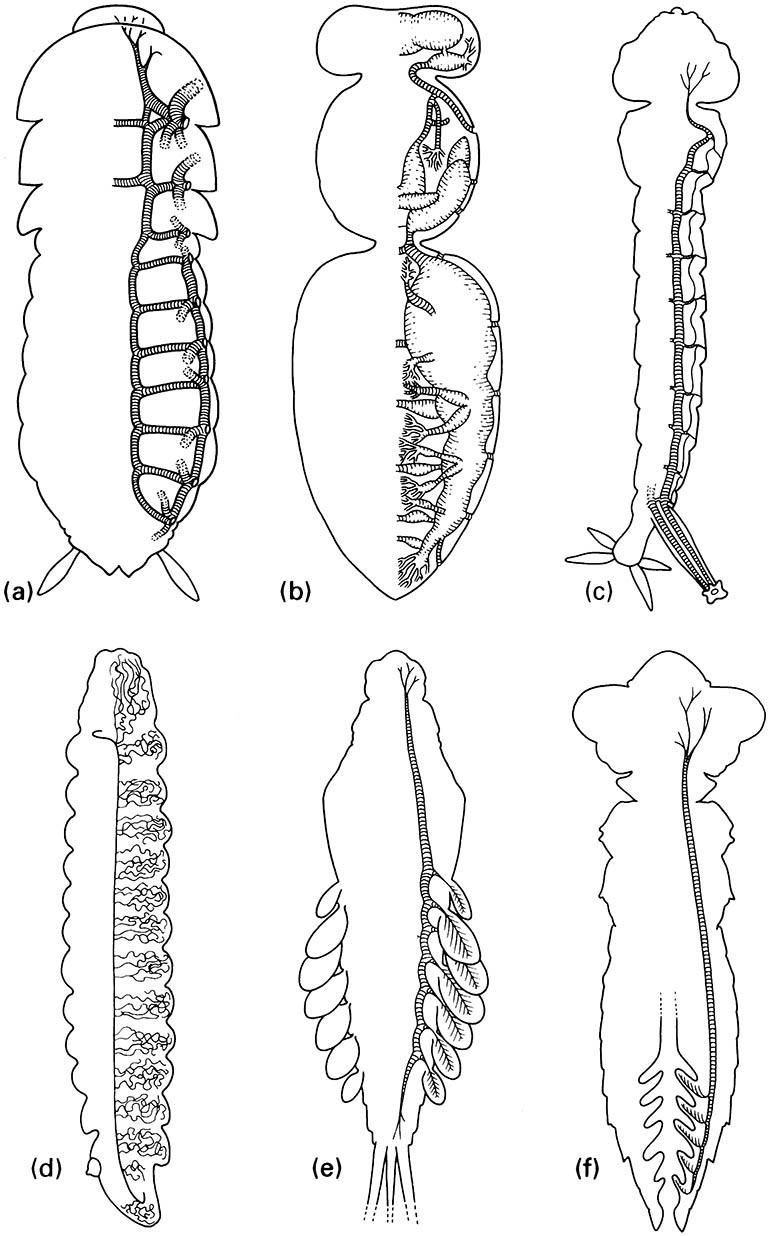10.3.2. Gaseous exchange in aquatic insects
The gaseous exchange systems of insects depend upon oxygen diffusion, which is rapid through the air, slow through water, and even slower across the cuticle. Eggs of aquatic insects absorb oxygen from water with the assistance of a chorion (section 5.8). Large eggs may have the respiratory surface expanded by elaborated horns or crowns, as in water-scorpions (Hemiptera: Nepidae). Oxygen uptake by the large eggs of giant water bugs (Hemiptera: Belostomatidae) is assisted by unusual male parental tending of the eggs (Box 5.5).
Although insect cuticle is very impermeable, gas diffusion across the body surface may suffice for the smallest aquatic insects, such as some early-instar larvae or all instars of some dipteran larvae. Larger aquatic insects, with respiratory demands equivalent to spiraculate air-breathers, require either augmentation of gas-exchange areas or some other means of obtaining increased oxygen, because the reduced surface area to volume ratio precludes dependence upon cutaneous gas exchange.
Aquatic insects show several mechanisms to cope with the much lower oxygen levels in aqueous solutions. Aquatic insects may have open tracheal systems with spiracles, as do their air-breathing relatives. These may be either polypneustic (8–10 spiracles opening on the body surface) or oligopneustic (one or two pairs of open, often terminal spiracles), or closed and lacking direct external connection (section 3.5, Fig. 3.11).

(a) Simple tracheae with valved spiracles, as in cockroaches. (b) Tracheae with mechanically ventilated air sacs, as in honey bees. (c) Metapneustic system with only terminal spiracles functional, as in mosquito larvae. (d) Entirely closed tracheal system with cutaneous gas exchange, as in most endoparasitic larvae. (e) Closed tracheal system with abdominal tracheal gills, as in mayfly nymphs. (f) Closed tracheal system with rectal tracheal gills, as in dragonfly nymphs. (After Wigglesworth 1972; details in (a) after Richards & Davies 1977, ( b) after Snodgrass 1956, (c) after Snodgrass 1935, (d) after Wigglesworth 1972)

